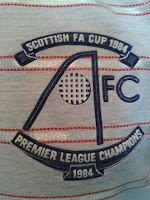@spaceclinics physio 'King' Kenny Watt recently had the opportunity of attending the World University Games with Team GBR that took place in Kazan in Russia in July.
Here are his thoughts on the sports he covered, and the Games themselves.
"Judo, Shooting and Male Rugby 7’s all in 30 degree heat, a veritable smorgasbord of aggression, athleticism and weapons. What is not to love or get excited about these sports from a medical/physio standpoint?
Multisport events provide a unique occasion to get first hand experience of new sports and athletes and surround you with a rich learning environment. This proved to be the case throughout my time at WUGS.
My own NGB work at home revolves around volleyball, a sport with very little if any contact and certainly no weapons, so exposure to sports with an inherent risk of sports trauma proved at times intimidating, but made for a fantastic experience made possible by building close working relationships with the excellent Team GBR sports doctors.
The Judo delegation were a tight knit group of three athletes and one coach who would only be in Russia for just over one week, including three days of training/gym and two days of competition. Pre-event we had discussed their needs and normal physio input as well as any regulations pertaining to medical support in competition. Training included sparing which provided my first real insight into the technicalities of the sport. It became apparent that it is an incredibly explosive sport placing huge demands on the whole body, and while they were incredibly adept at protecting themselves when thrown it obviously posed the risk of serious cervical injury. Alongside the Chief of Medicine we carried out a thorough check of the on-site medical facilities as well as the evacuation procedures, heavily relying on our interpreter who proved to be invaluable (this would also be the case when the rugby 7’s started a week later).
The three athletes would compete over two days, two on day one, and one on day two, with the competition following a knockout format. Physio input during competition was tapered and planned in response to time between bouts, athlete requests and their previously discussed needs. A number of pre, inter and post event soft issue techniques, some of which I had learned on the ACPSEM Sports Massage course and use daily, were applied to all of the athletes as well as the odd thoracic and lumbar manipulation.
Results were mixed for two of the athletes but Patrick Dawson (a young SCOTTISH athlete and potential commonwealth games competitor) only just missing out on a bronze medal fight. The judo proved to be one of the most fulfilling physio experiences I have ever had, the small number of athletes really gave me a chance to get to know them well personally and professionally.
Shooting proved to be a far less intensive affair from a physio standpoint, but I was allowed to hold a number of the guns. That is all….. In all seriousness, this was another event I had never witnessed or been involved in but a sport that features heavily in all major games so again would prove invaluable experience. Of the disciplines I observed the shooters are required to hold sustained postures, some in lying, some in kneeling, some in standing and in one event all three, one after another. This places quite a large degree of strain on arms, shoulders, necks and lower backs. Any treatment was applied mostly back at HQ with gentle soft tissue techniques applied to the aforementioned areas after training sessions. I only spent two days with the shooters before handing them on to their designated physio but found the event quite eye opening.
The rugby 7’s was easily the most successful but intensive period of the games for myself and was rounded off….WITH A BRONZE MEDAL. Through my clinic work in SPACE I have a large exposure to rugby players but have spent next to no time covering games, and while the on pitch medical care was provided by Nikki the men’s appointed physio and Karen the Dr, the time spent doing a large number of tapings and treatments before, during and after training/games really gave my clinical skills a work out in what at times was cramped high pressure situations.

The experience was made all the better by having a really good close working relationship with Nikki and the Dr, where communication and factor 30 sun cream were imperative (Karen is ginger and I’m see through Scottish white). The Rugby 7’s medal triumph were a great way to round off my WUGS sporting experience, one that was made all the better by working with a great medical team who pulled together when needed and made the physio HQ one of the most fun places to be in the whole team GB building.
19 days in Russia at WUGS was a long time, but one of the most fulfilling experiences I have had. "
He's back in Scotland now so why not quiz him about the experience if you're a patient, and if you are from one of those sports listed then why not ask him to assess you next time you're injured?

























